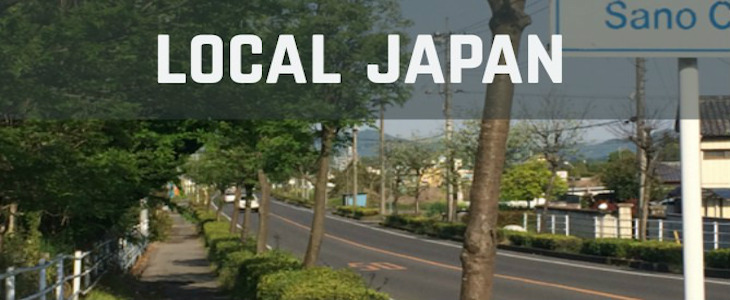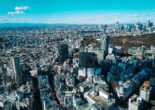
Waking up to mountains still amazes me. Having grown up in a flat area like North Texas, I still find pleasure in little things most people take for granted in many parts of Japan, topography just one of them: going for a hike to see the sunset; enjoying a cup of green tea in the morning. Overall, I just feel more stimulated in Japan over living in the US or even other countries. When I spent a few years in California, I made attempts to visit different areas from time to time, but it was more than likely you’d find me reclining in my apartment on my days off, sipping Napa wine and watching YouTube. Whereas when I’m here, I’m constantly stretching myself by staying on top of the news, learning Japanese, and finding new places to eat and run. Every day is an adventure.
I have lived in Japan before. As a fresh graduate I signed up to be a teacher with AEON in Hiroshima, and when my contract wasn’t renewed I stayed on with a private company in Kagoshima. As a result, coming back lacked much of the culture shock and stress many of those experience teaching English for the first time. Add that to the fact that I’m no longer a 20-something with his mind racing from trivialities, and I find I’m much more comfortable in Japan now.
When I first considered coming back, I knew it needed to be the right job, in the right area. If I had signed on to another year with an eikaiwa like Peppy Kids or GEOS, being forced to sing to two-year-olds and cater to a manager only interested in sales, I have a feeling my spirit would have been broken within a month.
I also wanted to be within reach of Tokyo but not in the heart of it. If I were to be based in one of the 23 wards, I knew I’d fall into unhealthy habits: not learning Japanese as quickly as I should; eating too much imported food; spending too much money. However, I needed to be close because I had learned from my experience in smaller Japanese cities, and knew the key to surviving would be socializing. For me, this meant pursuing a variety of interests with expats and Japanese in a city big enough to offer them: standup, running groups, poker, adventure travel.
When the opportunity to work in Sano came up on the ESL Cafe forums, I did my research: only 1.5 hours from Asakusa, famous for strawberries, ramen, Premium Outlets, and (for some reason) the headquarters of the Japan Cricket Association. There was no denying it was a bit more inaka than I would have preferred, but my criteria were difficult to meet completely. I took the job.
I wish I could describe some big eventful introduction to life in Sano, but the truth is, my transition here has been even easier than I expected. I had a direct flight from Dallas to Narita, stayed overnight in Tokyo, and took the limited express train from Kita-Senju to Ashikaga the next day to meet with a company representative. Within a few days, I was standing in Sano, holding the silver key to my apartment, and wondered if there were any complications I hadn’t considered.
Unlike in Tokyo, where I might have expected to be living in a shoebox or someone’s closet, in Sano I have a two-story apartment (just 1LDK) with wifi and a smartphone SIM card ready within a week of my arrival. The previous owner had left enough furniture for me to survive, but nothing so damaged or ugly I would have to pay for the city to haul it away.
Quickly I came to understand that my Japanese experience this time around would be vastly different than that in 2006, when it took six weeks for NHK to install internet and gaijin cards were issued a week or two after arrival, not printed at immigration. My old go-to websites for snacks like Foreign Buyer’s Club were still up and running, and iHerb makes it ridiculously cheap to get organic foods anywhere in the world. On top of that, The Meat Guy satisfies my need for breakfast sausage. Combined with fresh fruit from the supermarket, multigrain bread from FBC, and oatmeal from iHerb, I’ve got a nutritious breakfast.
My office is a quick 15-minute commute on my mamachari (mother’s chariot; the most common bicycle in Japan), but I learned fairly quickly that it was easier to just take my bike to areas I wanted to explore in Sano rather than relying on buses or trains. When I visited AEON Mall for the first time, I caught a train for a few minutes, waited twenty minutes for the bus, and paid about 400 yen total when I could have just ridden my bike for 30-40 minutes for free.
The Premium Outlets are still a temptation, with their fancy expensive food. I learned there was a Hawaiian restaurant with bacon cheddar burgers, acai smoothies, and Kona Brewing Co. beer before I arrived and thought I’d be there every night gorging myself. There’s also a wine shop that imports special blends from California. Fortunately, having the shops just far enough away for them to be an inconvenience is a benefit to my health and wallet.
Usually my first priority when settling in a new place is finding a safe route – free of cars and not crowded – for my daily run and a decent gym. To give you a sense of Sano’s size, there are really only three gyms that I know of: one inside Sano City Hall which I have yet to figure out; one not far from work but that would be annoying to reach in the rain, and the third near Sanoshi Station, convenient by both bicycle and train if the weather starts acting up. I’ve been able to squeeze in evening classes and workouts when I’m not too exhausted.
Little discoveries keep popping up, and I try not to let myself become too complacent. Having something to shoot for always helps, like searching for individually bottled beer, or a decent hot springs. There’s a michi-no-eki not far from my apartment that’s a cool little stop on a Sunday afternoon, offering street food, an outdoor foot bath, and specialties of the region: Coco wine, Kaika sake, prepackaged Sano ramen. After just a few weeks in Fukuoka, I think I’m ruined for anything but tonkatsu ramen forever. Sano’s variety uses hand-cut noodles, but the broth has yet to win me over.
Meanwhile, my search for a decent onsen continues. There is a sento attached to the gym close to work, but it’s the same problem of commuting; if it’s raining, I’m not going to look forward to riding home after a long relaxing soak. There’s another one not too far away called Akami Onsen, but these are ofuro connected to two hotels. There’s nothing wrong with visiting the hotel just to use the bath, but I’d like to find a place with more of a neighborhood vibe.
I’m still learning about restaurants in Sano too. The Premium Outlets are good for a break, but one thing I’ve noticed that, in addition to ramen shops, there seems to be a good showing of Korean food; a BBQ place is five minutes’ walk from my apartment. I had to learn the Japanese word for samgyupsal (it’s豚三枚肉), only to be told they didn’t have any.
The bottom line for me is that Sano has nearly everything I want in a Japanese experience, save a few more people in the area as friends or more. I like riding my bike through the rice fields instead of ducking between people at Shibuya Station. I don’t mind planning my meals in advance by ordering imported food online as opposed to shopping in supermarkets. Just recently, I had to visit the dentist and was lucky enough to find one who spoke decent English (my Japanese is okay, but I’m not confident in medical terminology). The total price for two visits? 3000 yen with my National Health Insurance.
I think too many people moving to Japan see only the differences rather than what’s available to them. The truth is, with Amazon, you can have anything you want at your door within a matter of days. I find comfort in the steady income and blanket health insurance. I appreciate the quiet of an area like Sano more so than the hustle and bustle of Tokyo. I live well, more aware of my surroundings than I would be in the states and appreciating the safety and security of Japan.



